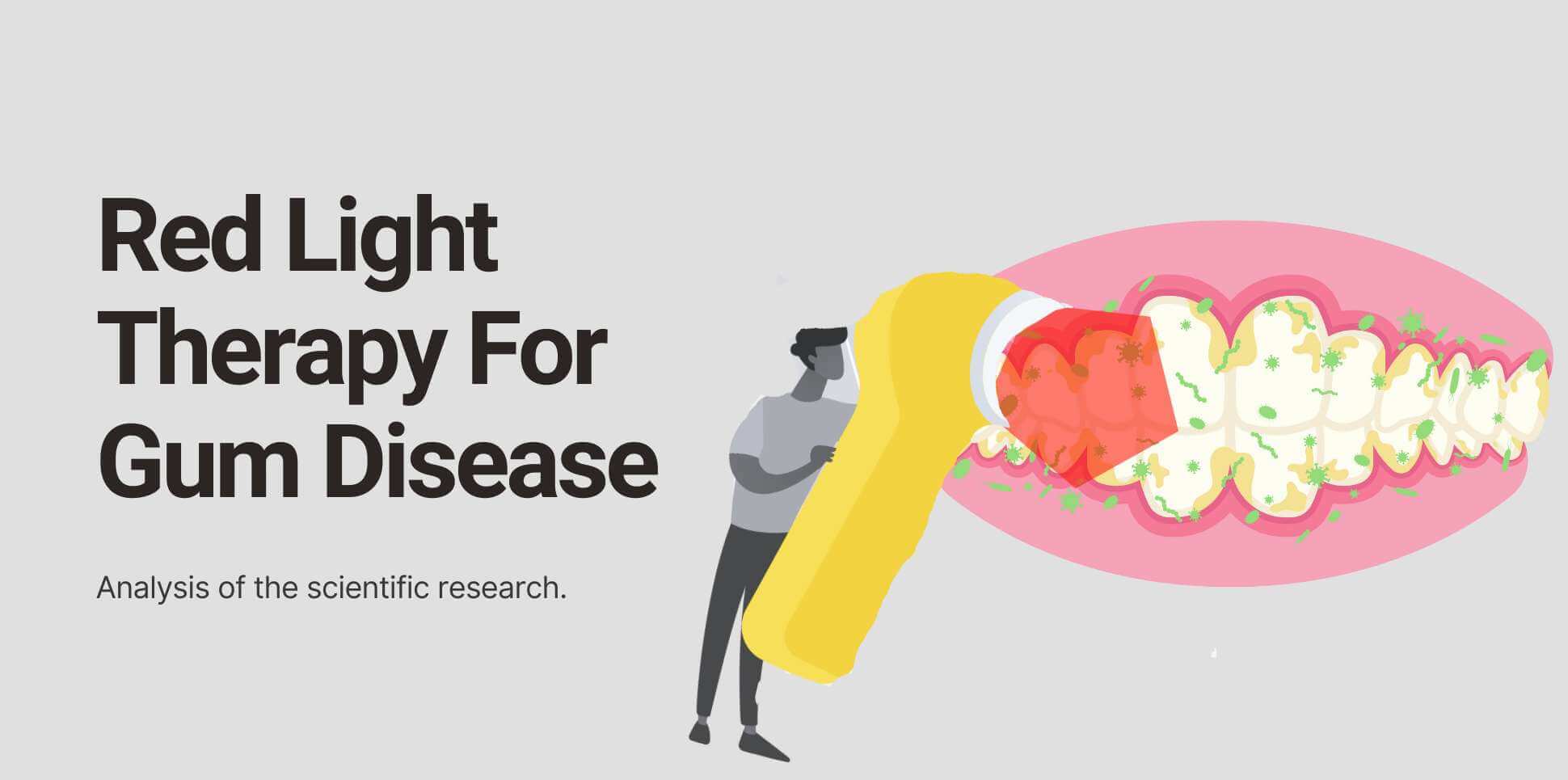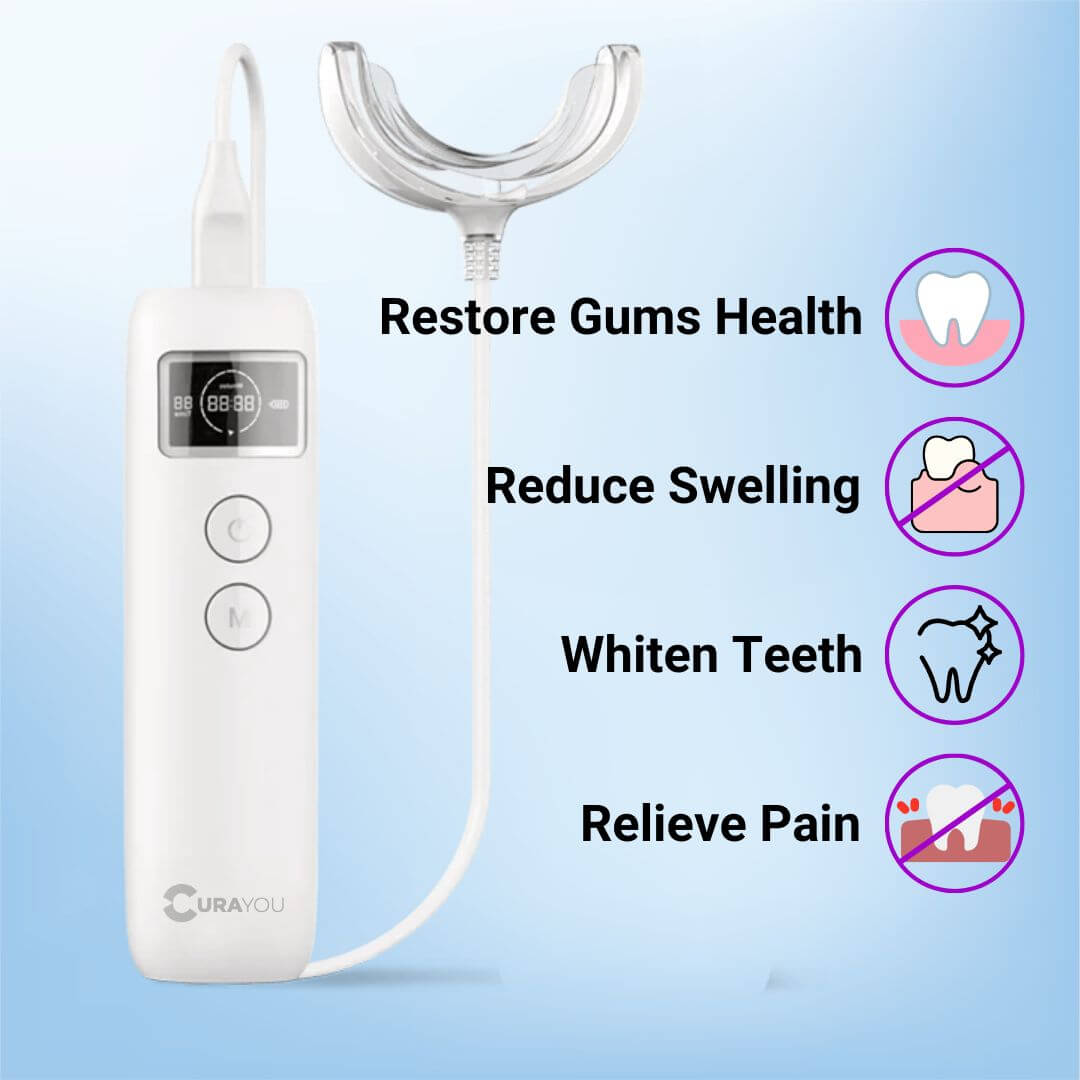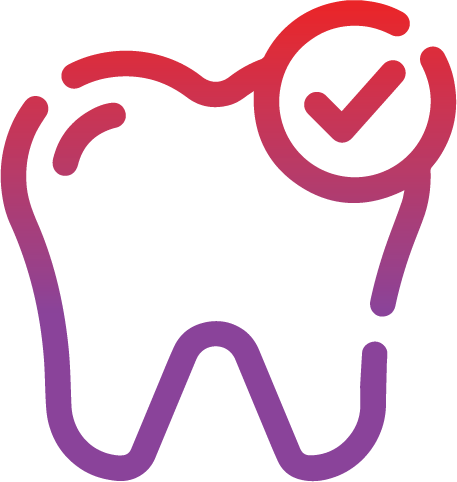
Red Light Therapy for Gum Disease
Understanding Red Light Therapy And Gum Disease
What is Red Light Therapy?
What Is Gum Disease?
Benefits Of Red Light Therapy For Gum Disease
Improve Mitochondrial Functioning
Similar to how our body can use sunlight to produce Vitamin D, it is able to absorb the energy of red light photons to produce cellular energy, also called Adenosine Triphosphate (ATP). This boost in ATP helps cells function more efficiently and repair damage more effectively.
Through this process, red light therapy restores normal mitochondrial functioning and restores oxidative stress. As a result, it can support tissue repair, reduce pain, and enhance recovery after injury or exercise.
"The study demonstrated an immediate increase in ATP production in vitro and an initial acceleration of callus formation in the fracture healing process, in the presence of NIR." [Quirk BJ, Sannagowdara K, et al.]
Reduction Of Inflammation
Inflammation is the body's natural response to injury or irritation, and it often involves the release of chemicals that can cause pain. Inflamed tissues can also restrict movement, cause stiffness and compress surrounding nerves leading to further discomfort.
Red light therapy has been found to activate anti-inflammatory responses in the body, which helps reduce pain and inflammation. It works by inhibiting the inflammatory signaling pathway.
This means that red light therapy can help decrease an excessive and uncontrolled inflammatory response in the body such as swelling. This is especially beneficial for older adults who may experience chronic inflammation.
"Laser therapy is a non-invasive method that contributes to pain relief and reduces inflammation, parallel to the enhanced healing and tissue repair processes." [Dompe C, Moncrieff L, et al.]
"A single application of LLLT produced significant reductions in inflammatory cell infiltration and inflammatory cytokines" [Hamblin MR]
Repair Of Degenerative Changes
Scientific studies also show that red light therapy supports the repair of degenerative changes in tendons, cartilage, and bones. This is achieved by 2 mechanisms:
"These low doses of light have demonstrated the ability to heal skin, nerves, tendons, cartilage and bones." [Cotler HB, Chow RT, Hamblin MR, Carroll J.]
“LLLT can enhance the viability and proliferation rate of healthy and especially osteoporotic autologous BMMSCs” [Fallahnezhad S, Piryaei A, Tabeie F, Nazarian H, Darbandi H, Amini A, Mostafavinia A, Ghorishi SK, Jalalifirouzkouhi A]
Pain Relief
Red light therapy can help alleviate pain by modulating pain-signaling pathways in the body through the release of neurotransmitters and neuromodulators, such as endogenous opioids and serotonin. These substances help to inhibit pain transmission and modulate pain perception.
Additionally, better microcirculation promoting the release of endorphins, the body's natural painkillers, and the warmth of the red light relaxes the muscles. Thus, red light therapy offers a non-invasive and drug-free method to manage and reduce pain for older adults.
“In addition to the demonstrated anti-inflammatory effects, LLLT may have benefits provided by its ability to act on nerves by reducing pain transmission and activating endogenous opioid receptors” [Hamblin MR]
Increased Blood Flow
Another significant benefit of red light therapy is its ability to improve blood circulation. The light energy stimulates the formation of new capillaries, enhancing blood flow to injured areas. This increased circulation delivers vital oxygen, nutrients, and immune cells necessary for efficient healing. By allowing for better delivery of essential resources, new capillaries expedite the healing process.
Improved blood flow also aids in removing waste products and toxins from affected areas, and creates an optimal environment for tissue repair and regeneration. Thus, further supporting the body's natural healing mechanisms.
"A significant increase in blood flow was noted in the treated group" [Frangez I, Cankar K, et al.]
"The results indicated that LLLT accelerated collateral circulation and enhanced microcirculation" [Ihsan FR]
Review Of The Science
Red Light Therapy Versus Traditional Methods
Recommended Treatment Protocol For Oral Health
Side Effects & Risks
Red light therapy is considered safe to use, especially for older adults. It has virtually no risks or serious side effects.
Some people with light or skin sensitivities may experience mild side effects like skin irritation. These side effects are typically mild and temporary and should subside within a few hours of treatment.
To ensure the safety and effectiveness of red light therapy, it is crucial to choose FDA-approved devices. FDA approval indicates that the device has undergone rigorous testing and meets certain standards for safety and performance.
Conclusion





